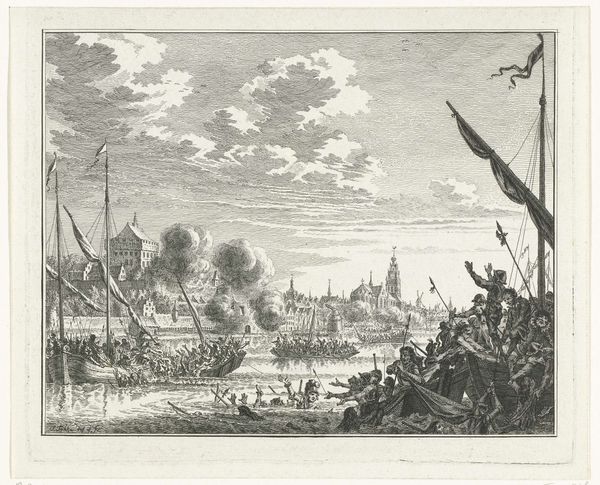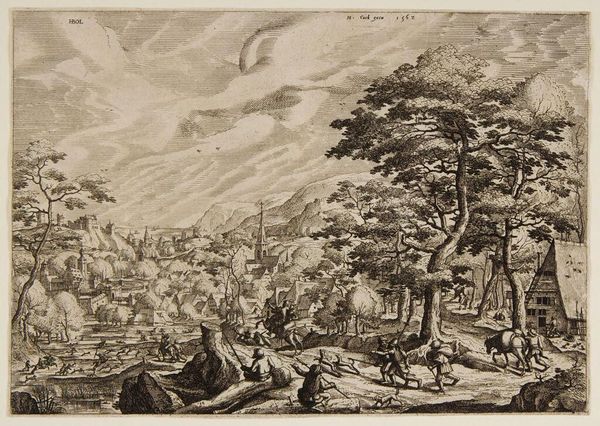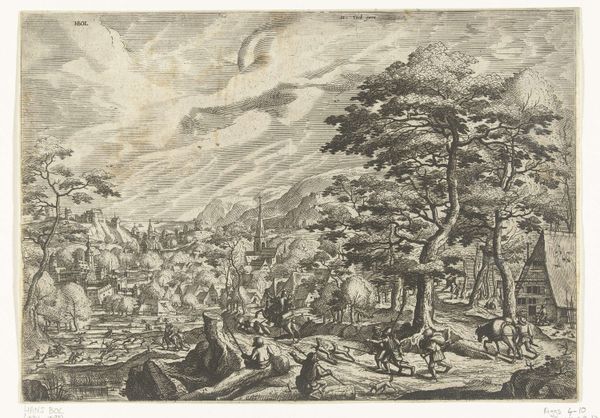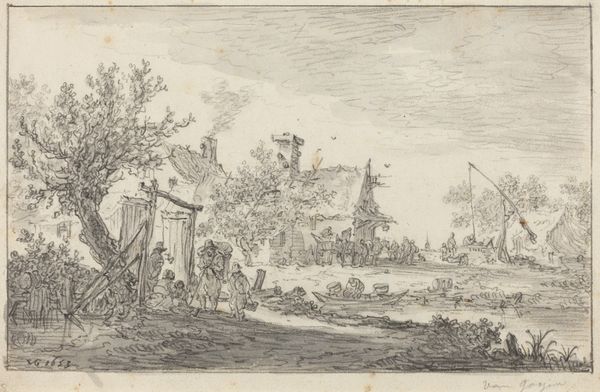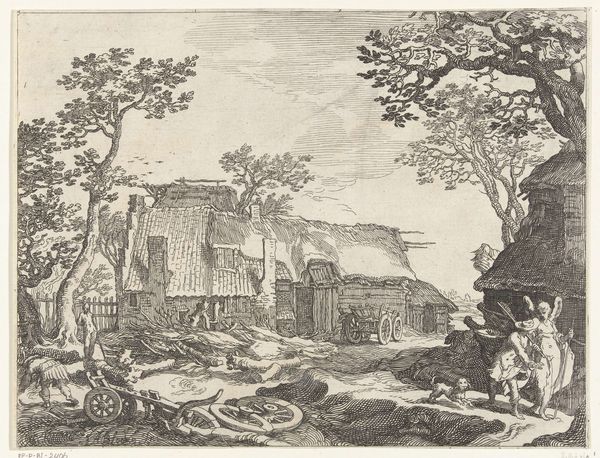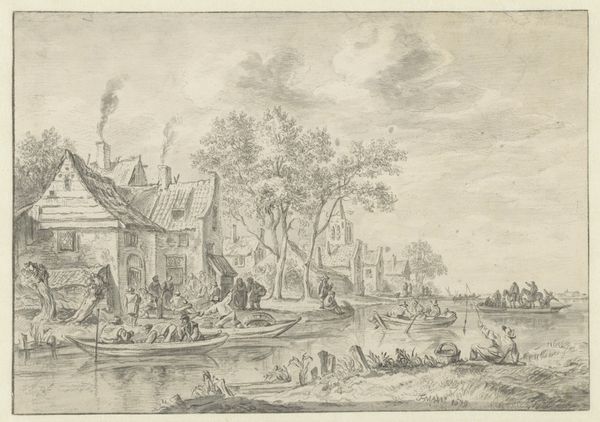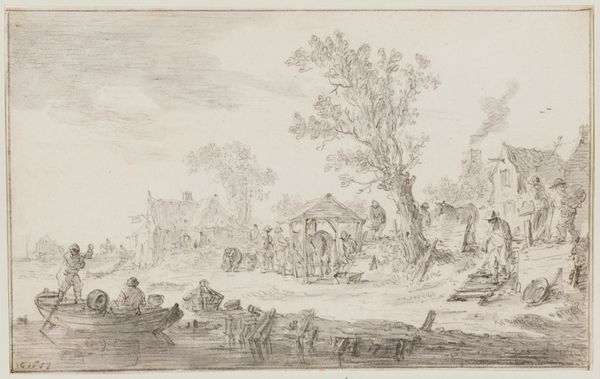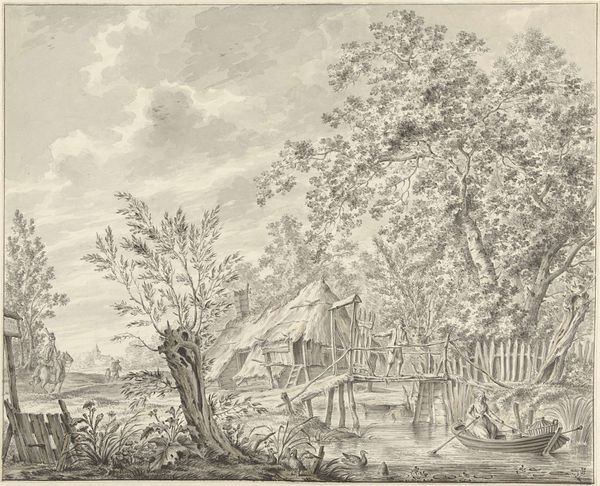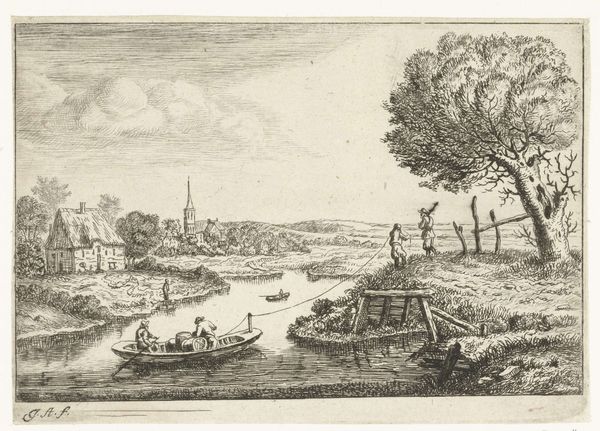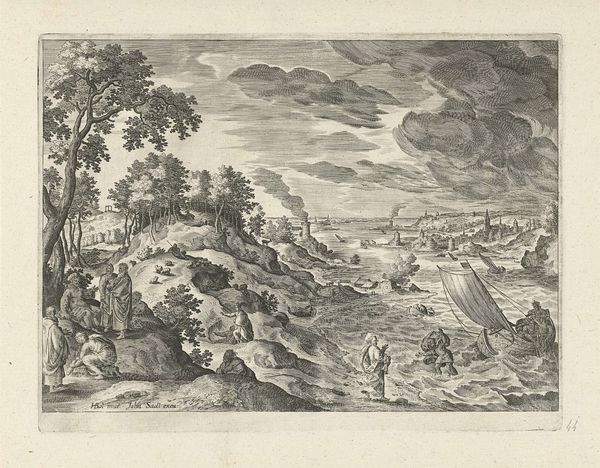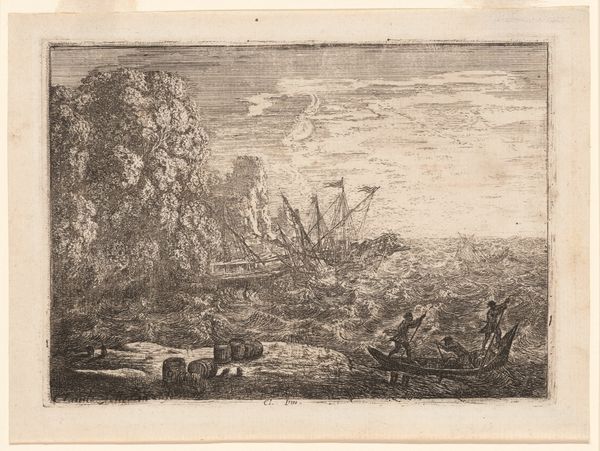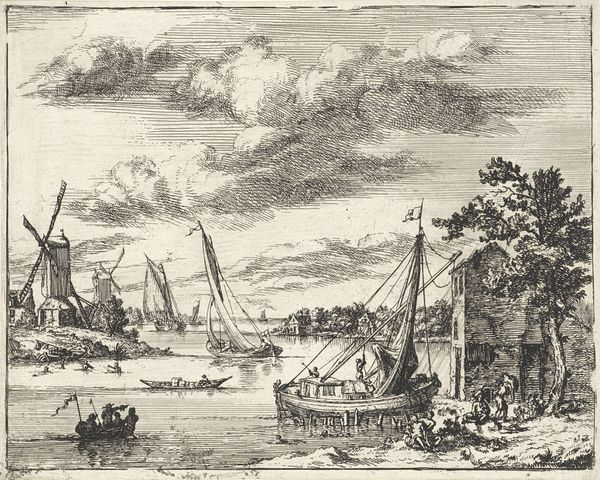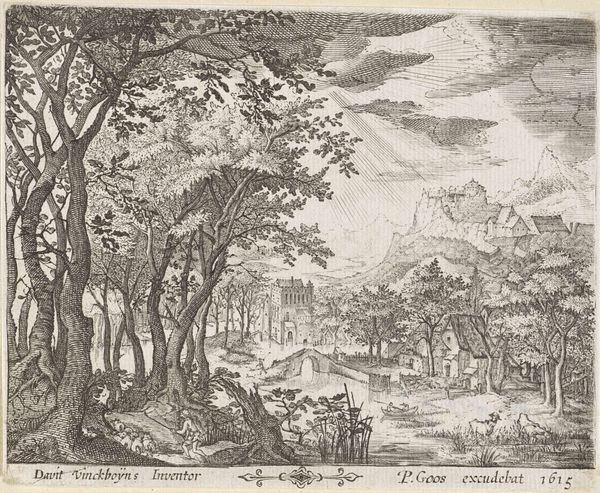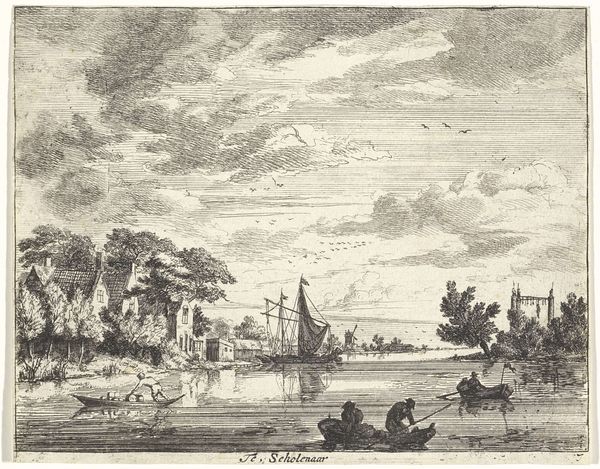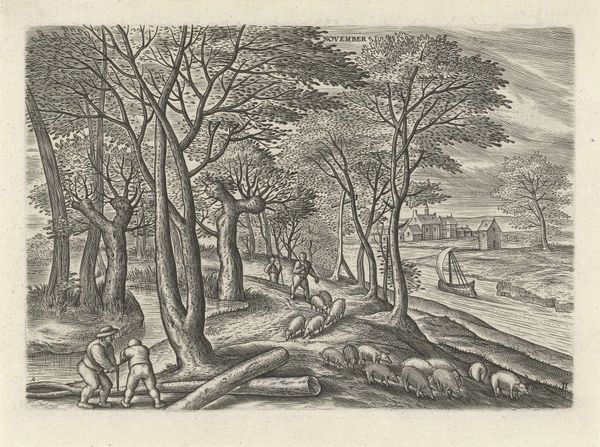
drawing, print, etching, paper, ink
#
drawing
#
narrative-art
# print
#
etching
#
landscape
#
perspective
#
paper
#
ink
#
romanticism
#
cityscape
#
history-painting
#
realism
Dimensions: height 340 mm, width 460 mm
Copyright: Rijks Museum: Open Domain
Hermanus Numan created this image in 1807 depicting the Steenschuur after a disaster. Immediately, we're struck by the stark image of destruction, framed by the motif of bare trees, their branches reaching like distressed arms toward the heavens. The bare tree, a symbol resonating across cultures, embodies loss and the cyclical nature of life. We see echoes of this desolation in, say, Caspar David Friedrich's landscapes, where withered trees evoke a similar sense of mortality. Here, they bear witness to human suffering. Their starkness heightens the emotional impact, tapping into our collective memory of vulnerability and the frailty of human constructs against nature's force. These trees in Numan's scene become a mirror to our own anxieties. As we view them, we are not just observing a historical event but also confronting our primal fears of chaos and impermanence. The recurrence of such symbols across different epochs is a testament to their enduring power, proving that even in destruction, the seeds of renewal are sown.
Comments
No comments
Be the first to comment and join the conversation on the ultimate creative platform.
